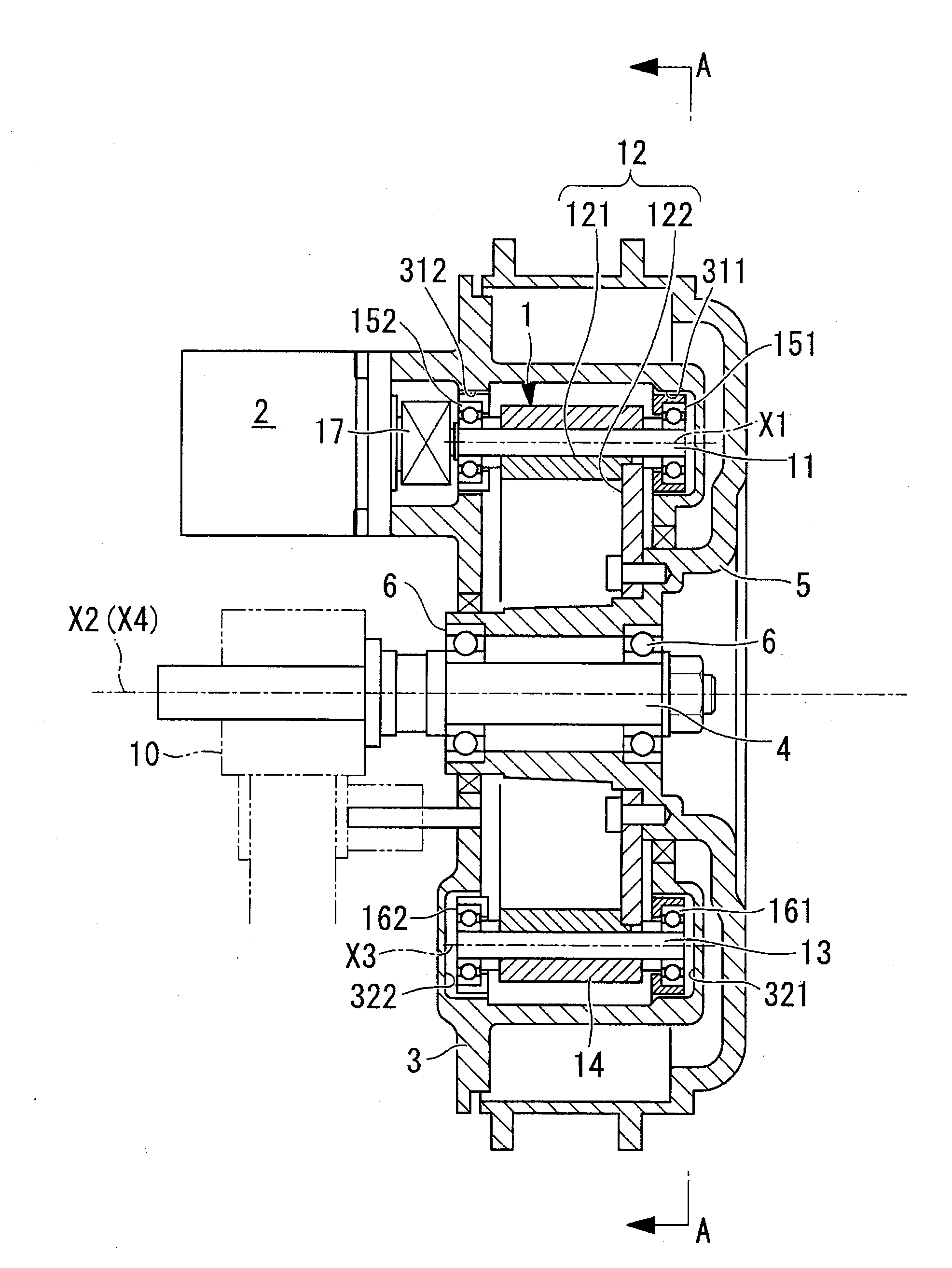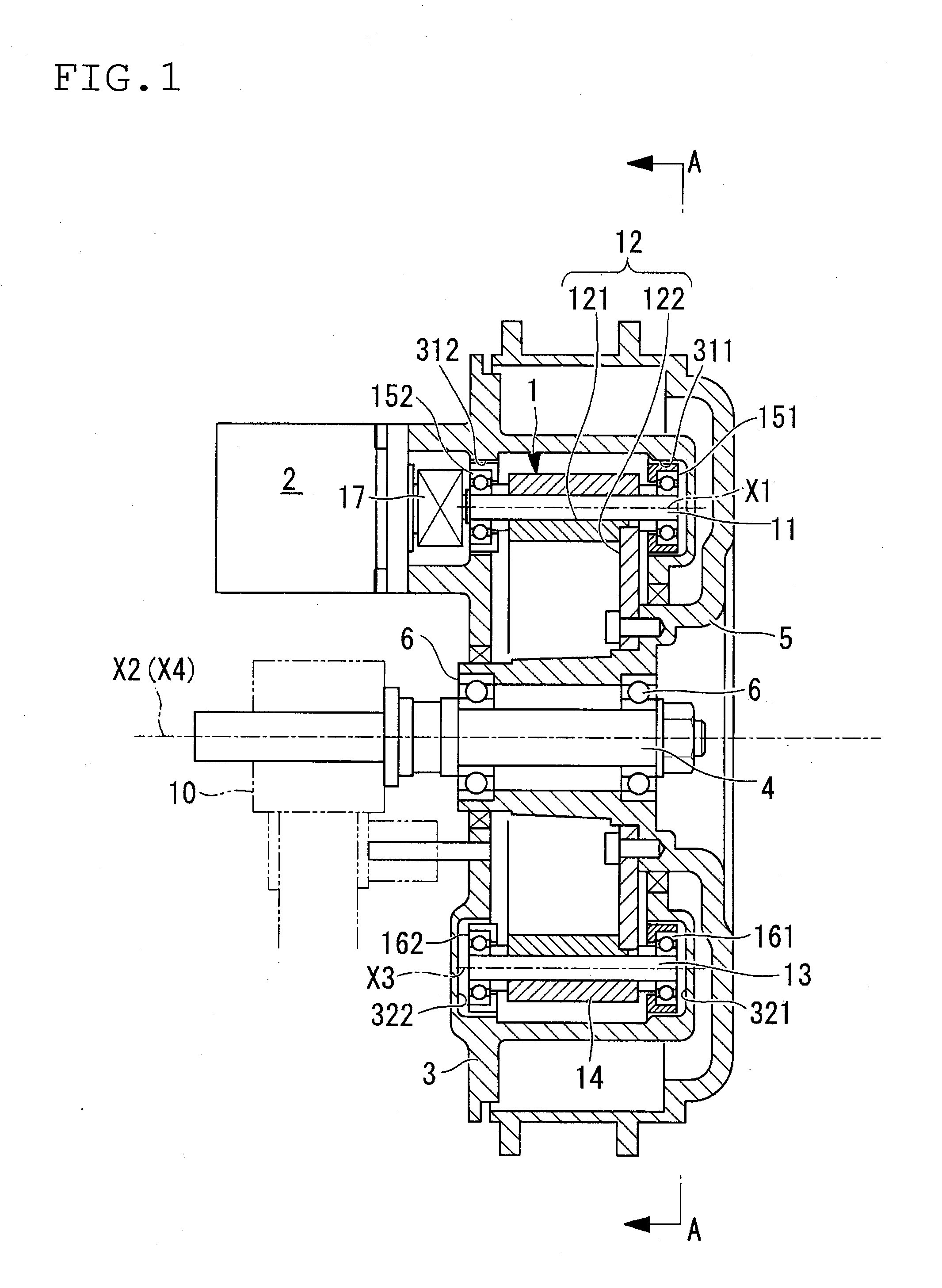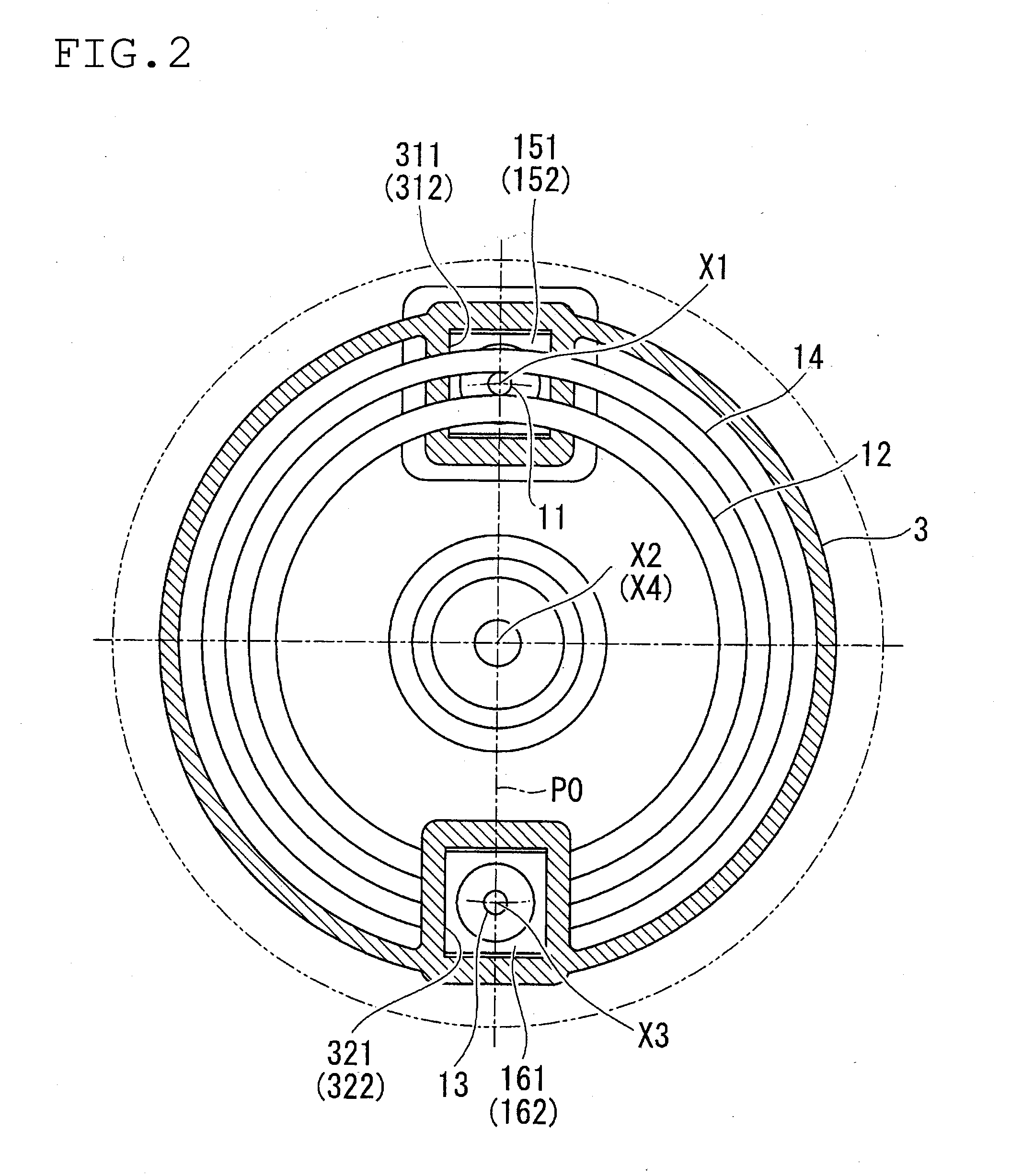Transmission mechanism
a transmission mechanism and transmission shaft technology, applied in the direction of friction gearings, belts/chains/gearings, friction gearings, etc., can solve the problems of slippage (slip loss) between the drive roller, the mechanism is prone to become large, and the weight and noise increase, so as to achieve high speed-varying ratio, low cost, and small size
- Summary
- Abstract
- Description
- Claims
- Application Information
AI Technical Summary
Benefits of technology
Problems solved by technology
Method used
Image
Examples
first embodiment
Structure of First Embodiment
[0041]The wheel drive unit of this embodiment comprises a transmission unit 1, drive source 2, support body 3, axle 4, hub (axle support section) 5 and bearing 6 as main components.
Structure of Transmission Unit of this Embodiment
[0042]A transmission unit 1 is provided with a small diameter rolling element 11, a large diameter rolling element 12, a supplementary rolling element 13, and a pressure adjustment ring 14, as main components.
[0043]The small diameter rolling element 11 is capable of rotation with a first virtual axis of rotation X1 as a center. In more detail, both end sections of the small diameter rolling element 11 are supported by bearings 151 and 152 (refer to FIG. 1), and the small diameter rolling element 11 is thus rotatable about the axis.
[0044]Also, one end of the small diameter rolling element 11 is connected by means of a universal joint 17 to the drive source 2. In this way the small diameter rolling element 11 is connected to the d...
second embodiment
[0093]Next, a wheel drive unit using a transmission unit of a second embodiment of the present invention will be described based on FIG. 4. In the description of this embodiment, structural elements that are basically common to the first embodiment described above have the same reference numerals attached, and description will be simplified.
[0094]With the transmission unit 1 of the second embodiment, the first and second virtual axes of rotation X1 and X2 are arranged on a first virtual plane P1. On the other hand, the second and third virtual axes of rotation X2 and X3 are arranged on a second virtual plane P2.
[0095]Here, an external angle θ formed by the first plane P1 and the second plane P2 is set to 0<θ≦20 (refer to FIG. 4). Here, if internal angle is made α, then it is possible to represent the external angle θ as follows:
θ=180°−α
(refer to FIG. 4).
[0096]Specifically, with the second embodiment the position of the supplementary rolling element 13 has been moved compared to the ...
third embodiment
[0103]Next, a power transmission unit using a transmission unit of a third embodiment of the present invention will be described based on FIG. 5 and FIG. 6. In the description of this embodiment, structural elements that are basically common to the first embodiment described above have the same reference numerals attached, and description will be omitted.
[0104]The power transmission unit of the third invention comprises a transmission unit 1, a casing 30, an output shaft 40, and two bearings 60.
[0105]A transmission section 122 of the transmission unit 1 of the third embodiment is fixed to the output shaft 40. The output shaft 40 is rotatably attached to the casing 30 by means of the bearings 60.
[0106]Also, the casing 30, similarly to the first embodiment, is provided with slits 3011 and 3012 for attachment of the bearings 151 and 152 for the small diameter rolling element 11, and slits 3021 and 3022 for attachment of the bearings 161 and 162 for the supplementary rolling element 13....
PUM
 Login to View More
Login to View More Abstract
Description
Claims
Application Information
 Login to View More
Login to View More - R&D
- Intellectual Property
- Life Sciences
- Materials
- Tech Scout
- Unparalleled Data Quality
- Higher Quality Content
- 60% Fewer Hallucinations
Browse by: Latest US Patents, China's latest patents, Technical Efficacy Thesaurus, Application Domain, Technology Topic, Popular Technical Reports.
© 2025 PatSnap. All rights reserved.Legal|Privacy policy|Modern Slavery Act Transparency Statement|Sitemap|About US| Contact US: help@patsnap.com



